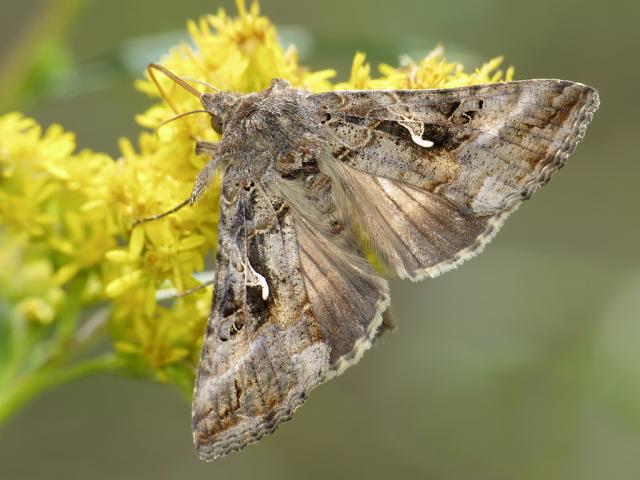
Silver Y
A migrant to the UK, it has been recorded less than four hundred times, most often at light from coastal counties of England but numbers are increasing, possibly supported by transitory breeding. Easily recognised by large metallic silver 'dog-leg' mark in the centre of a pinkish-brown bar on the forewing.
In mainland Europe, it is widely distributed and expanding its range westwards since the end of the 19th Century. Can be found on the continent from spring to late autumn in two broods, sometimes seen flying by day. Spends the winter as a young caterpillar.
Flies from May to October but most commonly seen in the UK from late August to October.
As a migrant, it cannot overwinter in the UK, but when larvae are seen, it is usually on Common Nettle, Yarrow, Chamomile, wormwoods and other herbaceous plants.
Can be found anywhere along the south coast, often in gardens.
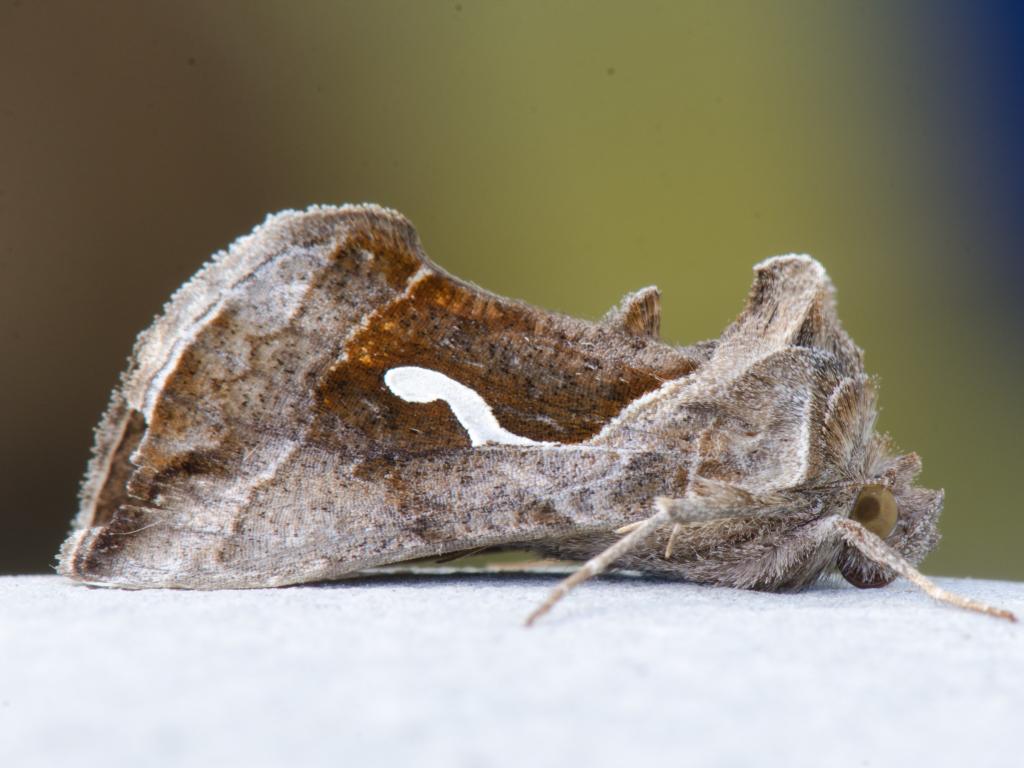
Dewick's Plusia - Koen Thonissen
Koen Thonissen
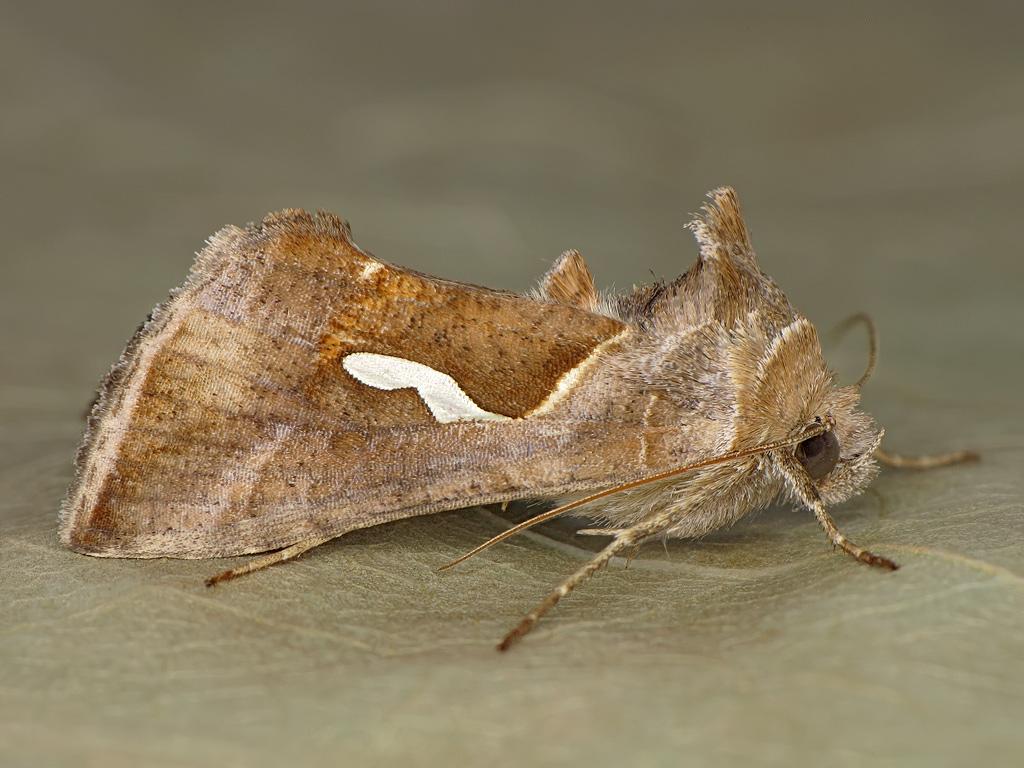
Dewick's Plusia - Ryszard Szczygieł
Ryszard Szczygieł
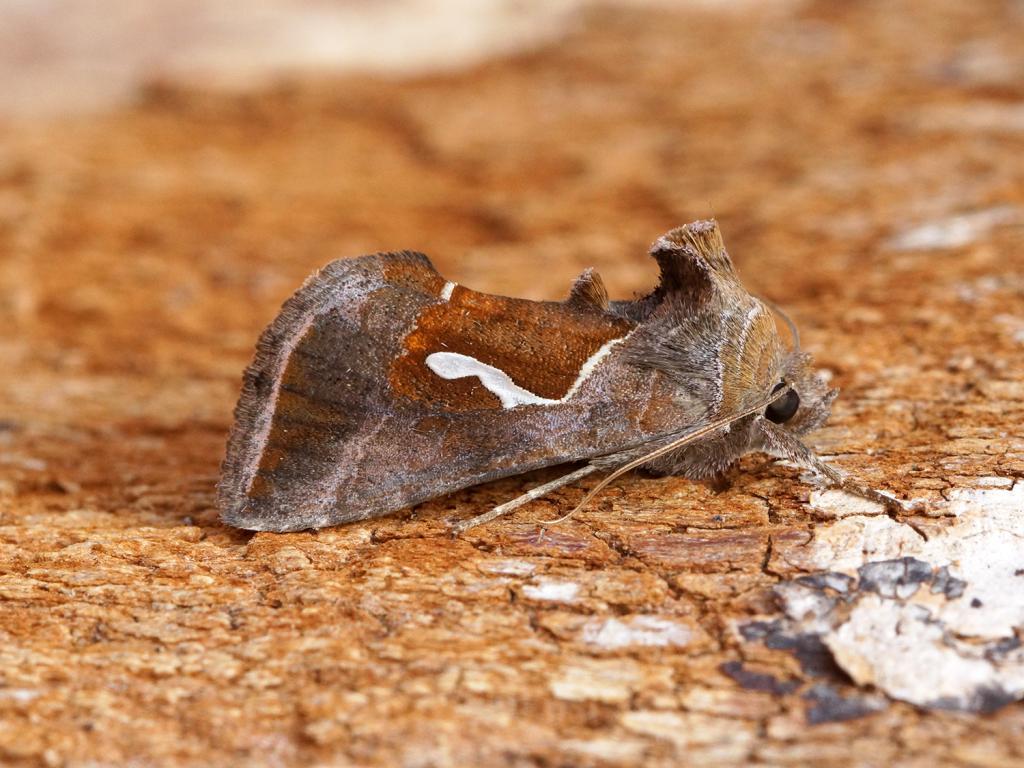
Dewick's Plusia - Ben Sale
Ben Sale
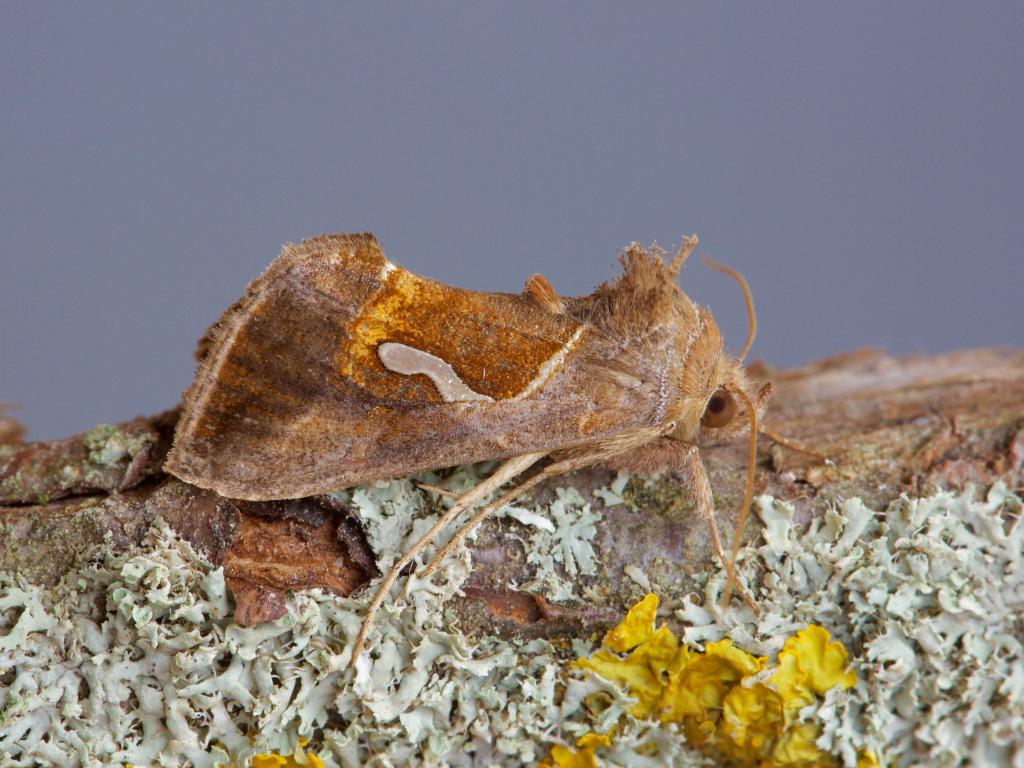
Dewick's Plusia - Samantha Batty
Samantha Batty
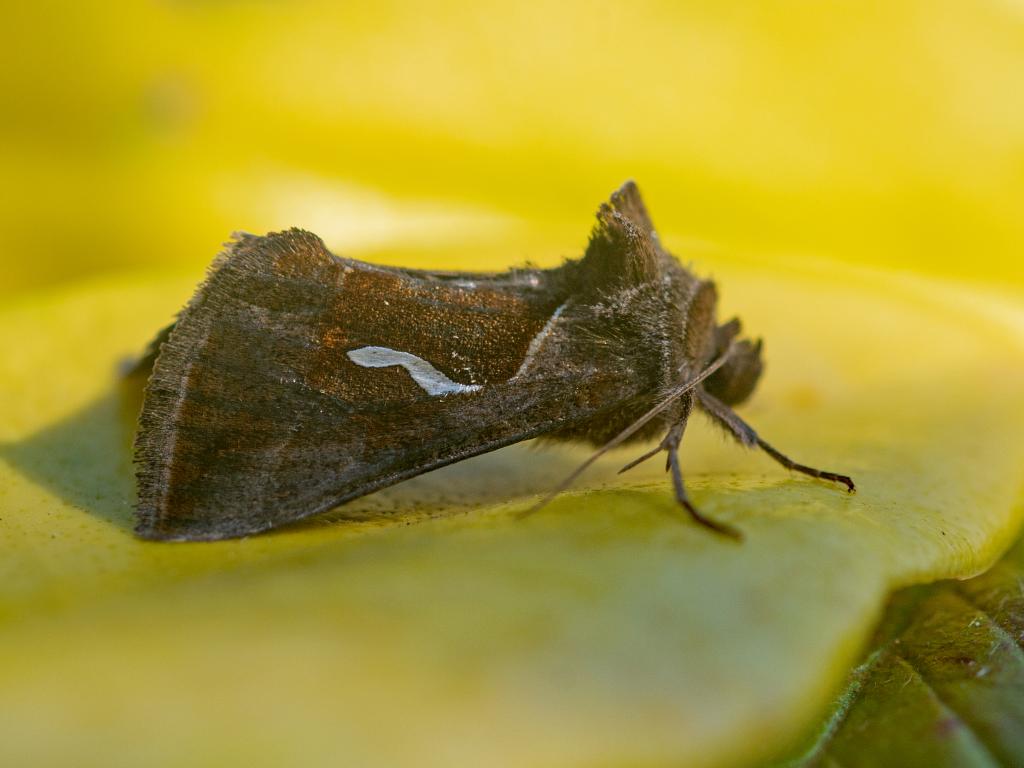
Dewick's Plusia - Andrew Cooper
Andrew Cooper
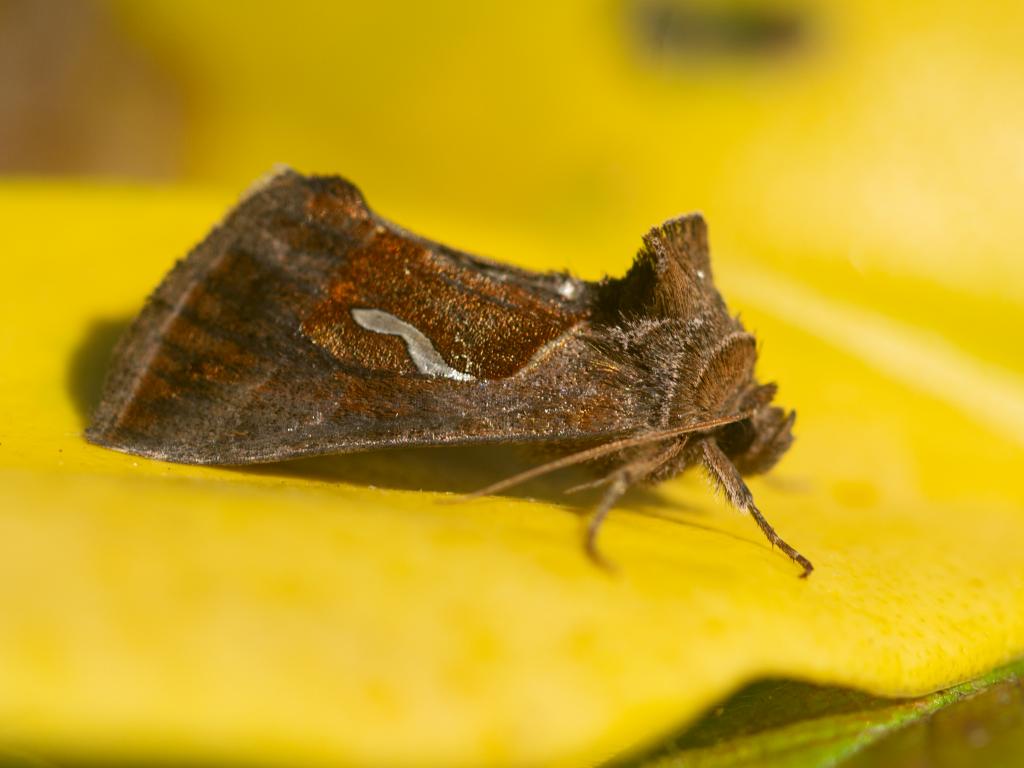
Dewick's Plusia - Andrew Cooper
Andrew Cooper
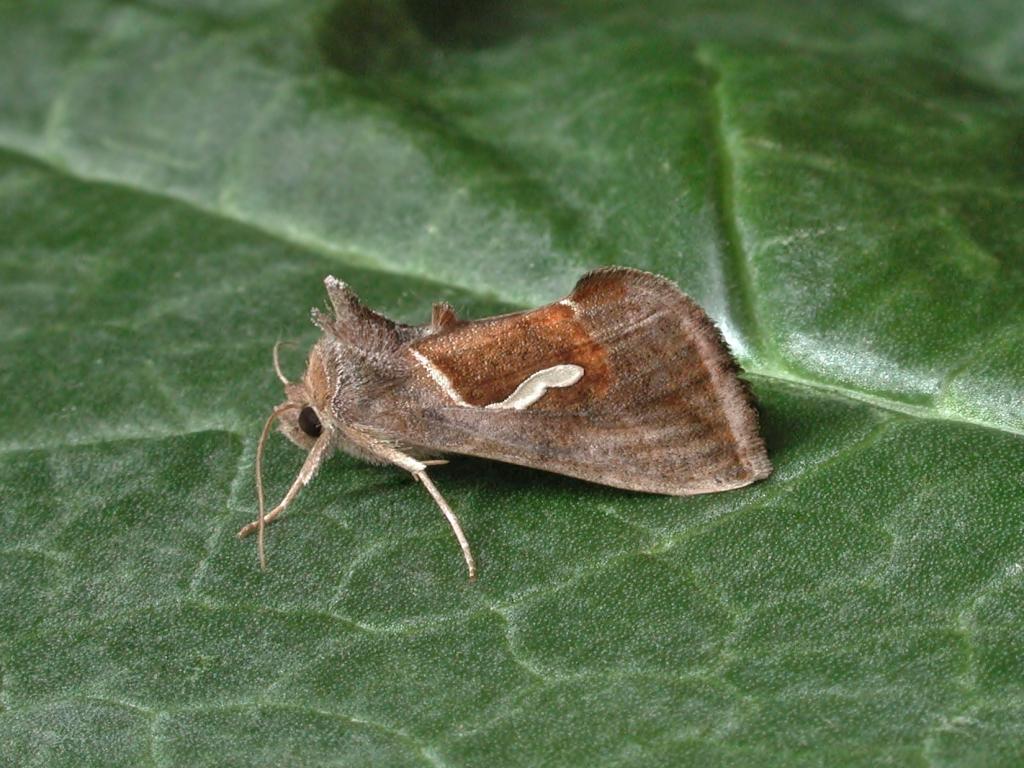
Dewick's Plusia - Stuart Read
Stuart Read
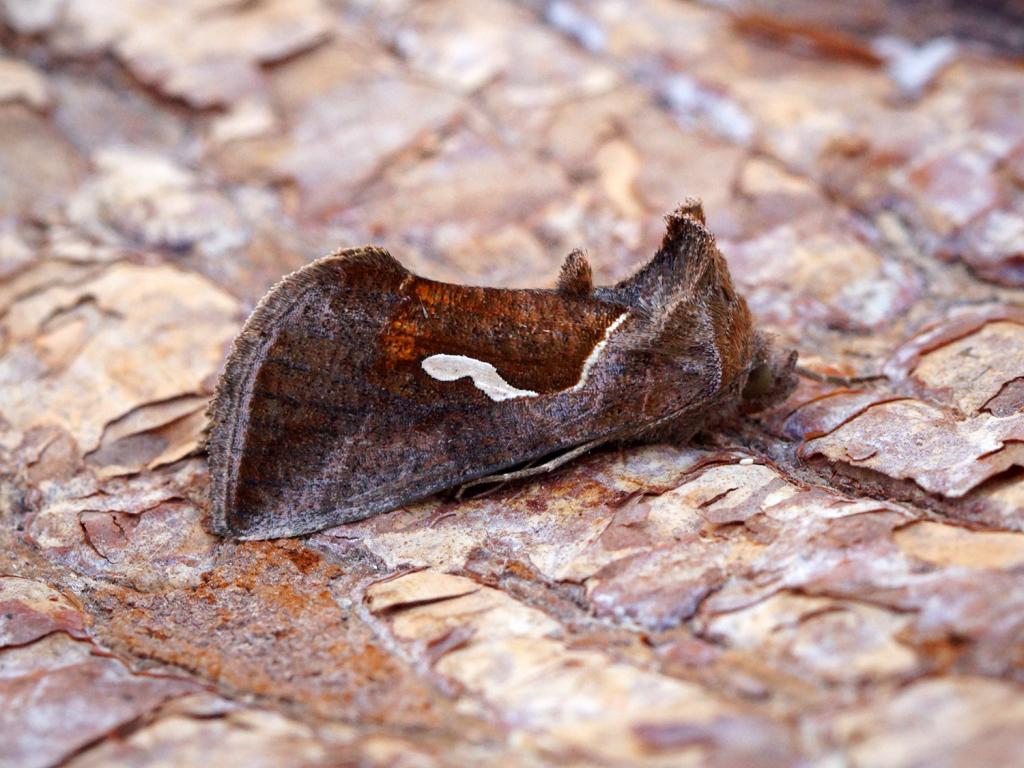
Dewick's Plusia - Ben Sale
Ben Sale
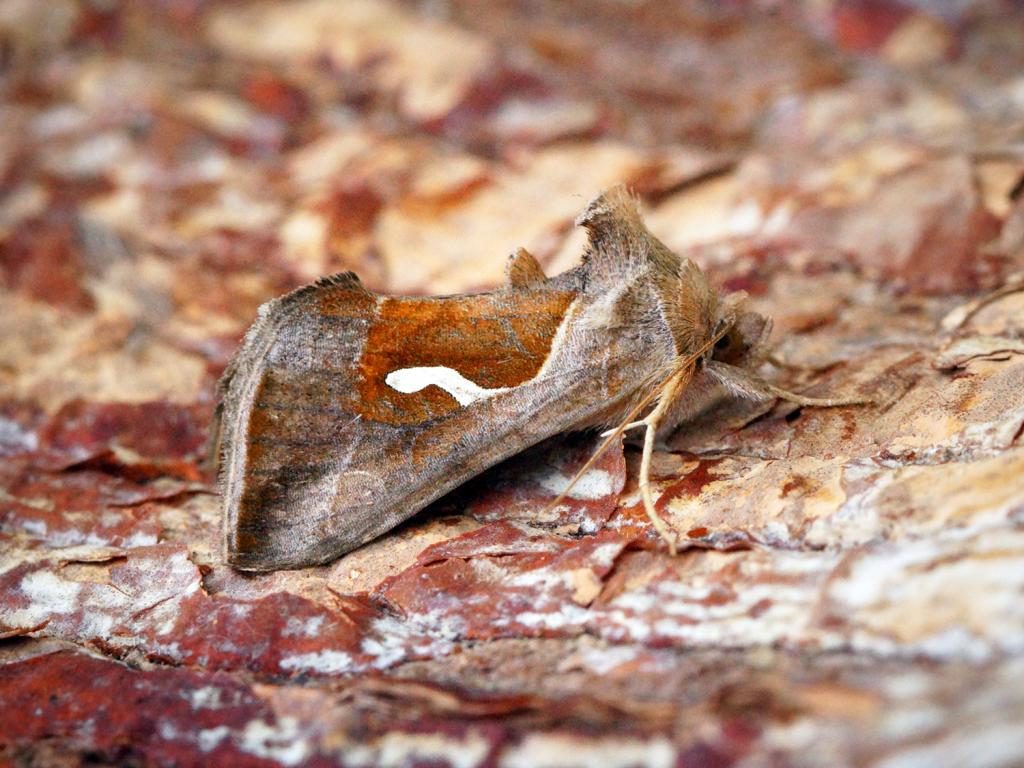
Dewick's Plusia - Ben Sale
Ben Sale

Dewick's Plusia - Dave Shenton
Dave Shenton
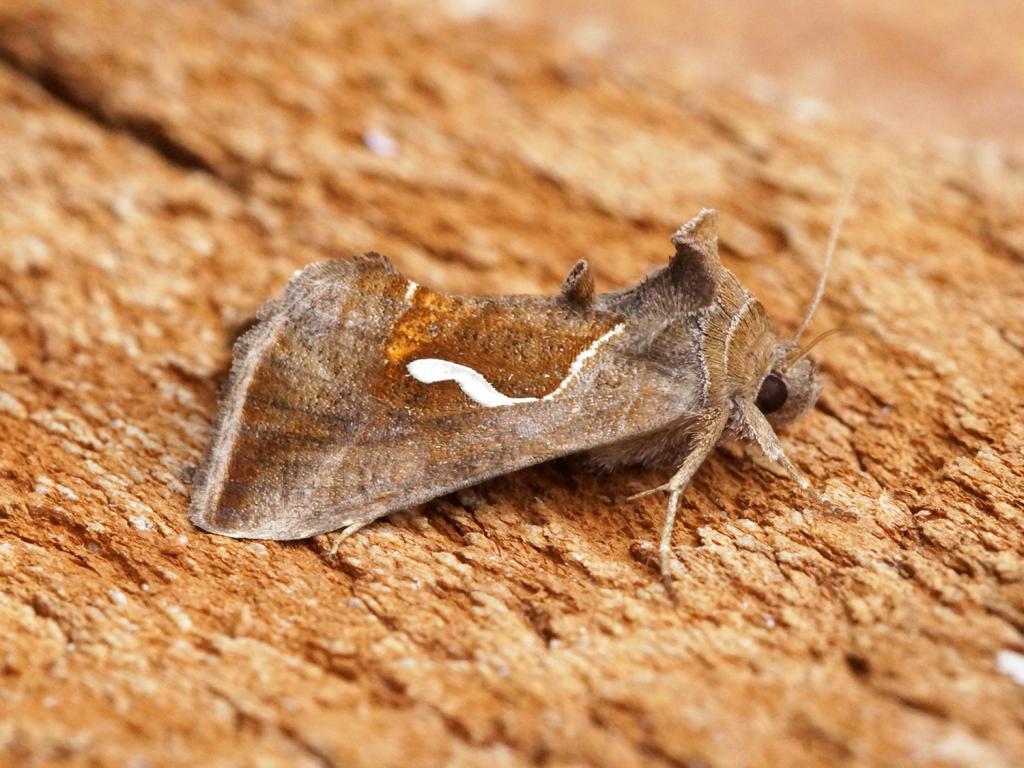
Dewick's Plusia - Ben Sale
Ben Sale
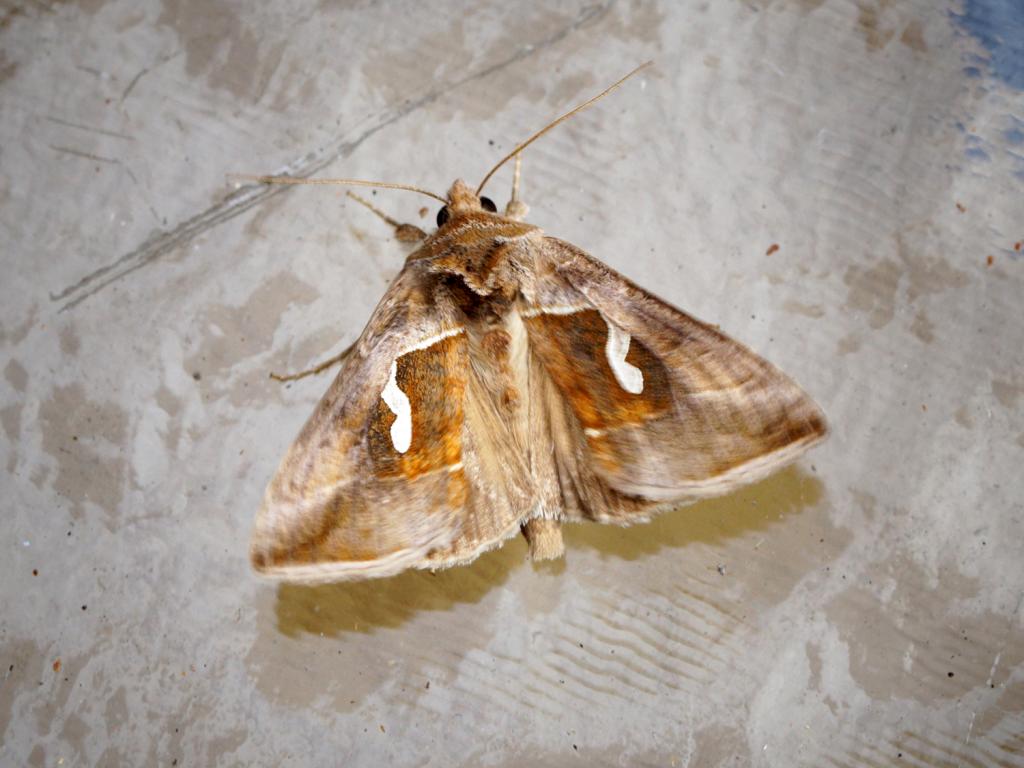
Dewick's Plusia - Ben Sale
Ben Sale